In a departure from the usual features written by myself, I would like to reproduce the interview I did with the Oasis Archive website recently on my book Where Did It All Go Wrong? Oasis and the Millennium Meltdown 1995 – 2000.
Tell me a little about your professional background and what made you become an author.
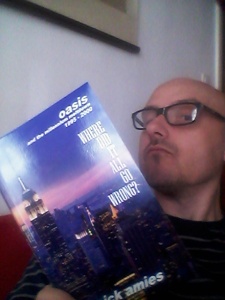 I’ve been a journalist for over 20 years now and in that time I have worked in jobs that have required me to write about pretty much everything; business, football, politics, you name it… It’s the diversity of the job which has kept me interested and motivated. One day I could be writing a piece on architecture for the New York Times, the next interviewing a Hollywood director like Terry Gilliam for the Economist. But music has always been my main passion and I’ve been able to keep that side of journalism going even when I’ve had a full time job on a news desk. It keeps you sane when you’ve been writing about war and suffering all day to be able to get to a gig, spend some time with one of your heroes backstage and then cover their concert. I’ve been lucky enough to interview many of my idols and then to write about their lives and their music…it doesn’t get much better than that for me.
I’ve been a journalist for over 20 years now and in that time I have worked in jobs that have required me to write about pretty much everything; business, football, politics, you name it… It’s the diversity of the job which has kept me interested and motivated. One day I could be writing a piece on architecture for the New York Times, the next interviewing a Hollywood director like Terry Gilliam for the Economist. But music has always been my main passion and I’ve been able to keep that side of journalism going even when I’ve had a full time job on a news desk. It keeps you sane when you’ve been writing about war and suffering all day to be able to get to a gig, spend some time with one of your heroes backstage and then cover their concert. I’ve been lucky enough to interview many of my idols and then to write about their lives and their music…it doesn’t get much better than that for me.
As for the books, I’ve always written stories, ever since I was a little kid and it was always a dream of mine to write a novel. After a friend of mine read a screenplay I was working on, he suggested I expand on the story and write it as a novel instead. That turned out to be my first book, the Madchester road trip novel “Mersey Paradise”. It was a good experience but I felt I could do better. So I started a second book shortly after, the Britpop love story “She’s Electric”, which I’m very proud of. Writing books is now one of the many side projects I have, on top of holding down a full-time job as an editor, maintaining a relationship and being a father.
Do you remember where and when you first heard of the name Oasis? Was it their music, or did their reputation and press precede this?
It was 1994. I was living in Norwich in the East of England and I was at a friend’s place getting high. We were watching the Channel 4 late night programme The Word and Oasis came on – their first TV appearance – playing Supersonic. I was blown away. Later I found out that they had played the intimate Arts Centre venue in the city the week before that, and I’ve been gutted about that ever since. It would have been amazing to catch them at that time, before it all blew up. Supersonic was like nothing I’d ever heard before. I was a massive Stone Roses fan at the time and waiting for them to get their arses into gear had left me looking for something new. I dug Suede and I was a big fan of Ride but Oasis just felt tailor-made for me at that time. It all made sense. And Liam was just spectacular. When you watch that clip again, just remember that he was barely 21 and on national TV for the first time. He fills the screen. He invades your home. After that I was hooked.
The artwork for the book is obviously inspired by the artwork for the “Standing On The Shoulder of Giants” release, and it fits very well with the title and theme of the book! Was that a stock-photo, and how did you go about finding this?
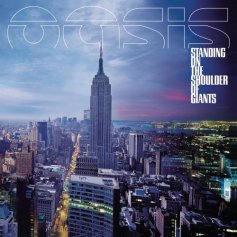 I wanted to design my own cover but using any of the official Oasis logos would have been problematic, what with the copyright issues and such. And you can forget about using photos of the band if you’re a self-published author on a shoestring production budget. So it’s a Shutterstock image which I found in their database and it’s the closest I could find to the shot of New York used on the cover of SOTSOG. I know the fans get where I’m coming from with it but a few people have asked why I have the Big Apple on the cover when the band come from Manchester. I hope reading the book will lead these people to the music if they’re not familiar with SOTSOG, which in my opinion is a sorely underrated album.
I wanted to design my own cover but using any of the official Oasis logos would have been problematic, what with the copyright issues and such. And you can forget about using photos of the band if you’re a self-published author on a shoestring production budget. So it’s a Shutterstock image which I found in their database and it’s the closest I could find to the shot of New York used on the cover of SOTSOG. I know the fans get where I’m coming from with it but a few people have asked why I have the Big Apple on the cover when the band come from Manchester. I hope reading the book will lead these people to the music if they’re not familiar with SOTSOG, which in my opinion is a sorely underrated album.
There is obviously a very strong British identity in the visual artwork for the first three albums and related singles (designed by Microdot). Later albums seem to deliberately move away from this, sporting a new logo and images locations far from Burnage. Do you have a favourite record sleeve, and what was your feeling on the shift in design?
I have to say that the final album, Dig Out Your Soul, is my favourite in terms of artwork. It’s as much of a departure from the traditional Oasis style as the music inside the sleeve is from their original sound. It’s psychedelic and mature – just as the recording itself is.
As for the shift in design from the Microdot sleeves of the 90s, I just accepted it as part of Oasis progressing. Those Brian Cannon designs are iconic and part and parcel of the Britpop legacy Oasis left behind when they moved into the new millennium. The single cover of ‘Don’t Look Back in Anger’ is perhaps my favourite from that time. Moving away from Microdot, I loved the SOTSOG cover, the first one Simon Halfon did for the band, and the other covers and portraits he did after that really captured the band in that decade out of time, an older version of Oasis removed from the craziness of the years they dominated. Halfon’s style perfectly caught the band as they matured into serious artists and national treasures from the wild upstarts and party animals they were during their heyday.
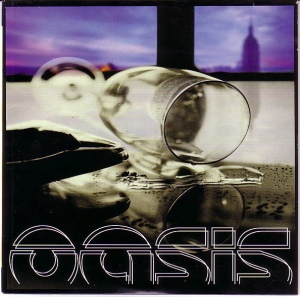 Halfon was a good choice to document these years. He’d been a long-time collaborator of Paul Weller’s and started working with the Modfather on art direction as far back as his days in The Jam. As such, through Weller’s friendship with Noel Gallagher, Halfon got to know the Chief, who appreciated his work with Weller and shared his love of The Beatles. But it was through a friend who was hired to shoot the video for ‘Supersonic’ that Halfon and Noel became friends. When it came to choosing an art director for SOTSOG, Noel called Halfon and asked him to do it. He then went on to photograph and design for Oasis throughout the rest of the band’s career.
Halfon was a good choice to document these years. He’d been a long-time collaborator of Paul Weller’s and started working with the Modfather on art direction as far back as his days in The Jam. As such, through Weller’s friendship with Noel Gallagher, Halfon got to know the Chief, who appreciated his work with Weller and shared his love of The Beatles. But it was through a friend who was hired to shoot the video for ‘Supersonic’ that Halfon and Noel became friends. When it came to choosing an art director for SOTSOG, Noel called Halfon and asked him to do it. He then went on to photograph and design for Oasis throughout the rest of the band’s career.
Why did you decide to focus on Oasis’ career from 1995 till 2000, and not 1994-2000, or up until their very last meltdown (2009)?
The rise of Oasis with their slash-and-burn approach to touring and the momentum which started to grow around the band in the lead up to the release of their debut Definitely Maybe is of course one of the great rock and roll stories – streetwise lads from the wrong side of the tracks making it mega big; it’s one of those classic origin stories. But a lot has been written about that phase, and rightly so. But for me, if you break down the career of the band into narrative sections, the most interesting is the one featured in the book. It starts with the release of Morning Glory, the second album, through the band’s imperial phase which followed when they were untouchable, playing to a quarter of a million people over the Knebworth weekend, and then – when the fame and fortune were at unprecedented levels – they dived headfirst into their third album, Be Here Now, and into a Himalayan-sized mountain of coke. The excess during this period is legendary but there are so many threads running through this story, behind the music and the madness, and that’s what I wanted to write about as much as anything; the press intrusion, the pressures the band were experiencing professionally and personally, the dynamic within the band, the changing musical and social landscape in the UK at the time. These are the things which contributed – along with the massive intake of drugs – to what I call the millennium meltdown. By the end of the 90s, all of this had taken its toll and it was unsurprising that Oasis Mark 1 fell apart before the 21st century began.
Do you ever see yourself writing a sequel to this book focusing on the next chapter of the Oasis history?
I’ve been asked by a few people if I’ll do a follow up and it certainly appeals to the fan side of me to dive back into Oasis history and start digging again but I chose to focus on a particular time period in the band’s career because that had not been done before. Besides, for me – as I’ve said before – the era I cover in the book is the most interesting part of the whole story: Oasis ascending to the summit of British rock before descending to the depths, where – ironically – they were probably at their highest, if you know what I mean. The years between 2000 and the split in 2009 are filled with great music but in terms of incident and precedent, there wasn’t that much to compare to the events that I’ve documented. What would we have? Noel storming off the tour in 2000 after Liam allegedly questioned the legitimacy of his daughter; Liam getting his teeth smashed out in a Munich bar fight in 2002, the divorces, the Spinal Tap procession of drummer’s after Whitey was sacked in 2004? The truth is, up until the split in Paris six years ago, the stories behind the music kinda fizzled out. They made some great tunes during that time but the sensationalism was over.
Did you get to see the band live during the timeframe of the book (1995-2000)?
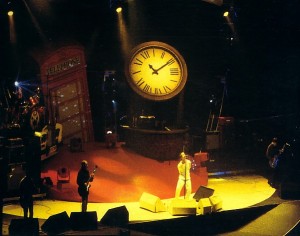 I saw them headline Glastonbury in 1995 and then on the Be Here Now tour at Wembley Arena in 1997. Both shows were splendidly shambolic for different reasons. At Glastonbury, Liam was more interested in intimidating the crowd, which failed to respond to many of the songs from Morning Glory that no one had ever heard before. At Wembley, they were just back in the UK after the first leg of the BHN world tour and they looked and sounded a bit frazzled. Plus the popularity the band was enjoying by then meant it was like a variety show with all the families and young kids in the stands, especially as it was around Christmas. It wasn’t very Oasis. The danger and menace was absent. But don’t get me wrong – I loved both gigs purely because it was Oasis. I went on to see them another five times in the years leading up to the split and Noel Gallagher nailed it when he said recently that the band got better as the songs got shitter! Late-period Oasis were still a fearsome live act, even if the youthful mayhem had long been left behind by then.
I saw them headline Glastonbury in 1995 and then on the Be Here Now tour at Wembley Arena in 1997. Both shows were splendidly shambolic for different reasons. At Glastonbury, Liam was more interested in intimidating the crowd, which failed to respond to many of the songs from Morning Glory that no one had ever heard before. At Wembley, they were just back in the UK after the first leg of the BHN world tour and they looked and sounded a bit frazzled. Plus the popularity the band was enjoying by then meant it was like a variety show with all the families and young kids in the stands, especially as it was around Christmas. It wasn’t very Oasis. The danger and menace was absent. But don’t get me wrong – I loved both gigs purely because it was Oasis. I went on to see them another five times in the years leading up to the split and Noel Gallagher nailed it when he said recently that the band got better as the songs got shitter! Late-period Oasis were still a fearsome live act, even if the youthful mayhem had long been left behind by then.
The book is very well researched with a lot of good quotes and references. Did you spend long researching it, and what were your primary sources?
It took about two years in total, although I did nothing on the book during the nine months my partner was pregnant with our daughter. The research itself probably took six months in all. I planned the book out in the themes I wanted to cover and went trawling through the Internet, reading all the interviews I could find, looking for relevant quotes and information which fitted. I contacted a number of people who were close to band but received the same response: there seemed to be an unwritten rule that no-one would speak about their time with Oasis. And the band members themselves rarely talk to authors because they just get too many requests. But there are some exclusive quotes from Noel and Liam in there as I’ve interviewed them both in the past. And former Oasis press officer Johnny Hopkins was especially helpful and actually helped a great deal to fill in a lot of the black holes I had in some of the chapters.
Have you ever met any of the band members, and if you were given the opportunity to ask only one question to Noel, Liam and Bonehead respectively; what would it be?
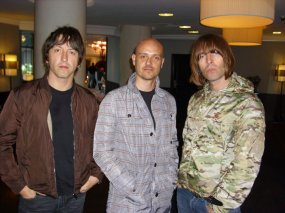 I’ve interviewed Noel and Liam before; Noel when Oasis were still going and Liam when he was with Beady Eye. I’ve also talked to Gem Archer and Andy Bell a couple of times, both as members of Oasis and of Beady Eye. I never met any of the other original Oasis members.
I’ve interviewed Noel and Liam before; Noel when Oasis were still going and Liam when he was with Beady Eye. I’ve also talked to Gem Archer and Andy Bell a couple of times, both as members of Oasis and of Beady Eye. I never met any of the other original Oasis members.
I guess if I had to ask one question, I’d ask Bonehead if he had ever considered getting a hair transplant during the band’s heyday. I always respected the fact that Oasis didn’t give a fuck about having a bald guy, or a fat bloke, in the band. It wasn’t about that to start with. But I also always wondered if he’d thought about getting his thatch thickened when the fame and fortune flooded in!
Here is a question from a forum member on SupernovaHeights, named joladella: In your acknowledgements, you thank Noel’s manager Ray McCarville for explaining, why he and the other former band members usually decline requests by authors. I’d love to know what that explanation was. I guess you might not be at liberty to say, but “… situation which prevents [them] …” (p. 236) sounds intriguing, what situation? Legal reasons? Or just a complicated way of saying they simply don’t want to?
There’s nothing sinister about that, as far as I know. The former band members get so many requests for their involvement in books that they simply wouldn’t have enough time to contribute to them all. As a result, they politely decline all requests. That’s the message I got from Ray.
It seems that very few (if any) of the members who left Oasis over the years – from Tony McCaroll in 1995, up until the final split in 2009 – actually ended on good terms with Noel Gallagher. Who do you reckon is the most difficult being in a band with; Liam or Noel?
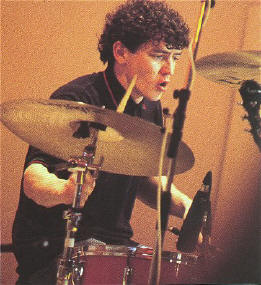 Hmm…If you were kicked out of Oasis or forced to leave, it’s very unlikely that you’d have an objective view of those who were responsible for that, right? And that person, more often than not, is going to be Noel because he’s the boss. If you leave under a cloud, you’re more than likely gonna hold grudges… So I think you have to look at who’s saying what and why in those situations.
Hmm…If you were kicked out of Oasis or forced to leave, it’s very unlikely that you’d have an objective view of those who were responsible for that, right? And that person, more often than not, is going to be Noel because he’s the boss. If you leave under a cloud, you’re more than likely gonna hold grudges… So I think you have to look at who’s saying what and why in those situations.
I’ve spent time with both brothers and both were absolute gents during the time I spent talking to them; eloquent, intelligent, thoughtful and above all very funny – not quite the surly thugs which many journalists portray them as. But I’ve never worked with, or for, either one of them. I would say that both of the Gallaghers are very driven people – yes, even Liam – and that they can be very demanding of those working with them in the pursuit of what they want to achieve. Neither suffers fools gladly. If I had to give my unqualified opinion, based only on the reports and anecdotes I have read during my research, I would say that the young Liam circa 1994/95 would have been a nightmare at times due to his erratic and explosive nature. I would also say that Noel circa 1997 would probably have been quite hard to be around too as he struggled with his substance abuse and the pressure of being the driving force behind the massive band Oasis had become. But this has to be put into context. Liam was struggling with fame and all the attention he was getting at the tender age of 21 and Noel was being crushed by the expectation of millions of fans and the media which had built him up into a Godlike genius. It’s likely any one of us would be an arsehole to some people in the same situation!
What Oasis songs mean the most to you?
That’s like being asked to choose which of your children you love the most. It’s a very tough question as I love pretty much everything Oasis ever did. But if I’m to attach meaning and memory to songs as a way of narrowing things down, I’d say – in no particular order – Supersonic, Listen Up, Let’s All Make Believe, and Who Feels Love. And that’s only from the period in the book. I’d be here all day if I did it for the band’s entire career.
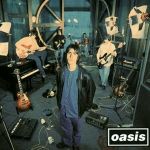 Supersonic because it’s such a statement of intent and it was the song that brought me to Oasis. When that drum intro starts and that woozy guitar line starts jangling, it’s goosebumps all over, even today. “I wanna be myself, I can’t be no-one else” – as Bonehead says in the book, that’s Oasis barging to the front and saying ‘right, we’ll take charge here…This is how it’s going to be from now on.’ And they were right. After that, all bets were off.
Supersonic because it’s such a statement of intent and it was the song that brought me to Oasis. When that drum intro starts and that woozy guitar line starts jangling, it’s goosebumps all over, even today. “I wanna be myself, I can’t be no-one else” – as Bonehead says in the book, that’s Oasis barging to the front and saying ‘right, we’ll take charge here…This is how it’s going to be from now on.’ And they were right. After that, all bets were off.
Listen Up contains some of the best lines Noel has ever written and Liam’s delivery of the whole song is pure magic. I came to this song when I was questioning a lot of things and it helped me get my world view sorted out. The lyric “day by day there’s a man in a suit who’s gonna make you pay, for the thoughts that you think and the words they won’t let you say” – that just fired me up.
Let’s All Make Believe is again a song which came to me when I was at a low point. There were a lot of false people around me at the time and I needed to make a change to get out of that situation. Then a true friend did something amazing for me and through his sacrifice, I made a life-changing decision which I have never regretted. I’m here doing what I do, living the life I have because of that and because of that friend. The song really resonates with that period but beyond its meaning to me, it’s just a beautiful song and, in my opinion, one of Liam’s best ever vocals.
Who Feels Love is probably derided by many because it’s a bit cod-psychedelic and it comes from the period of the millennium meltdown I write about where Noel had to start again from scratch in many ways. But for me, it’s a really uplifting piece of music and has such a light atmosphere to it that I love to kinda float along with it – which is something you don’t expect from an Oasis track. And it reminds me of the love of my life, so there’s that too!
What is your take on the ‘Be Here Now’ album? From its initially raving reviews, to its backlash of people returning it to second hand shops; did you opinion on the album also change?
 I remember that I bought a knock-off cassette from a night market in Thailand shortly after it was released and the quality was unsurprisingly a bit dodgy so I didn’t really get the full experience until later but I loved the ambition and the sheer weight of the tracks at first. Once I got a CD copy, I really got into it. It really was a soundtrack for that summer for me and my friends. I’ll admit though that I had a period where I skipped a lot of the tracks on Be Here Now. I also admit that I may have been swayed by the criticism it’s got over the years. But I’ve rehabilitated it and I play it quite regularly, although my opinions of certain songs are forever coloured by the negative associations. I love D’You Know What I Mean?, My Big Mouth, It’s Getting’ Better (Man!!) but tend to tolerate rather than celebrate songs like Magic Pie, Fade In-Out, and even All Around the World. There’s a great song in there somewhere but it’s just too long!
I remember that I bought a knock-off cassette from a night market in Thailand shortly after it was released and the quality was unsurprisingly a bit dodgy so I didn’t really get the full experience until later but I loved the ambition and the sheer weight of the tracks at first. Once I got a CD copy, I really got into it. It really was a soundtrack for that summer for me and my friends. I’ll admit though that I had a period where I skipped a lot of the tracks on Be Here Now. I also admit that I may have been swayed by the criticism it’s got over the years. But I’ve rehabilitated it and I play it quite regularly, although my opinions of certain songs are forever coloured by the negative associations. I love D’You Know What I Mean?, My Big Mouth, It’s Getting’ Better (Man!!) but tend to tolerate rather than celebrate songs like Magic Pie, Fade In-Out, and even All Around the World. There’s a great song in there somewhere but it’s just too long!
If Oasis were set to release a new retrospective release of any format; what would be on top of your wish-list? A Noel Gallagher penned autobiography? A coffee table book of pictures? Noel’s demos from Mustique, or a concert film from the pompous Be Here Now tour? You decide!
There’s a long-mooted Knebworth documentary and concert film floating about somewhere which would be a great historical as well as musical document of those times. I’d love to see that. An autobiography from Noel would also be an essential read, especially if he really went warts-and-all on the dynamic within the band and his relationship with Liam. But this idea which has been talked about, to do a feature film on the band’s story? No way. Who could play the Gallaghers better than themselves? No actor I can think of. It would be like fucking Stars in Their Eyes. “Tonight Matthew, I’m gonna be Liam Gallagher…” However, if someone wanted to pay me to write the screenplay, I’d be on it like a shot.
What’s next for you? Any new projects you’re working on?
I have a whole graphic novel series sitting around in various computer files and parts of my brain which is so massive in its depth and scope that it kinda scares me! There’s so much there. I’m afraid it’ll never see the light of day because it’s really fucking good, to be honest! It would take a really committed artist to bring it all to life and I haven’t found that person yet. I’m still looking. So that project’s just sitting in the shadows, watching me, whispering my name every day…
Other than that, I already have plans to do another non-fiction book, this time on Happy Mondays. I want to work with an old and very good friend of mine on this but we have to wait until his current projects are completed before we can start. Plus I need a bit of a break after Where Did It All Go Wrong? Once the promotion of that has slowed down, I’ll start the research on the Mondays book and we’ll take it from there.
Related content:
I also gave an interview on WHERE DID IT ALL GO WRONG? to Phonic FM’s Britpop Revival show as part of their great Manchester special in September. It’s worth listening to it all but I come on at the 52′ 30″ mark if that’s all you’re interested in. Click on the image below to go to the show on their Mixcloud page.

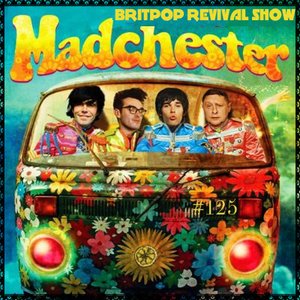
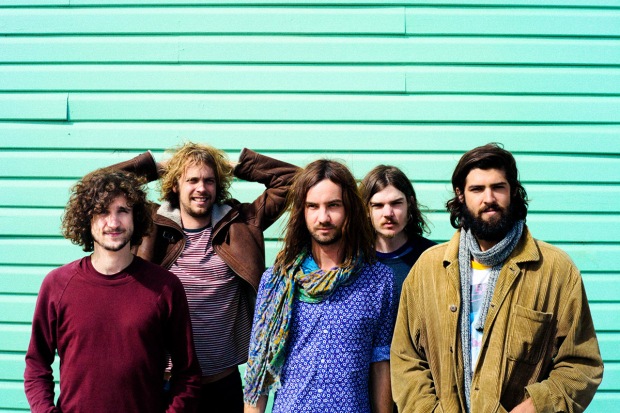
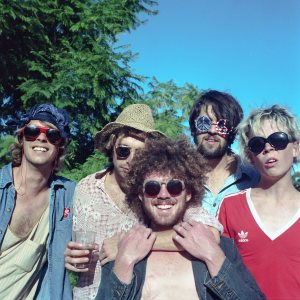







 For all aspiring Mod bands, the choice is a stark one: you either aim to be the new Jam or face the heinous consequences; that being the possibility of ending up as the new Ocean Colour Scene.
For all aspiring Mod bands, the choice is a stark one: you either aim to be the new Jam or face the heinous consequences; that being the possibility of ending up as the new Ocean Colour Scene.